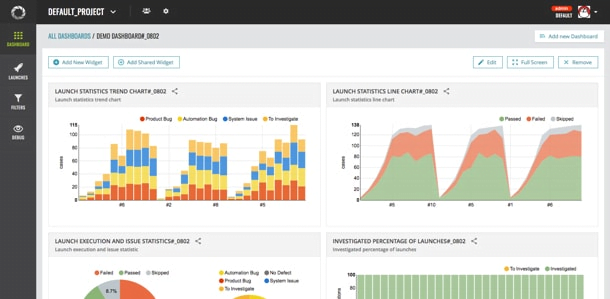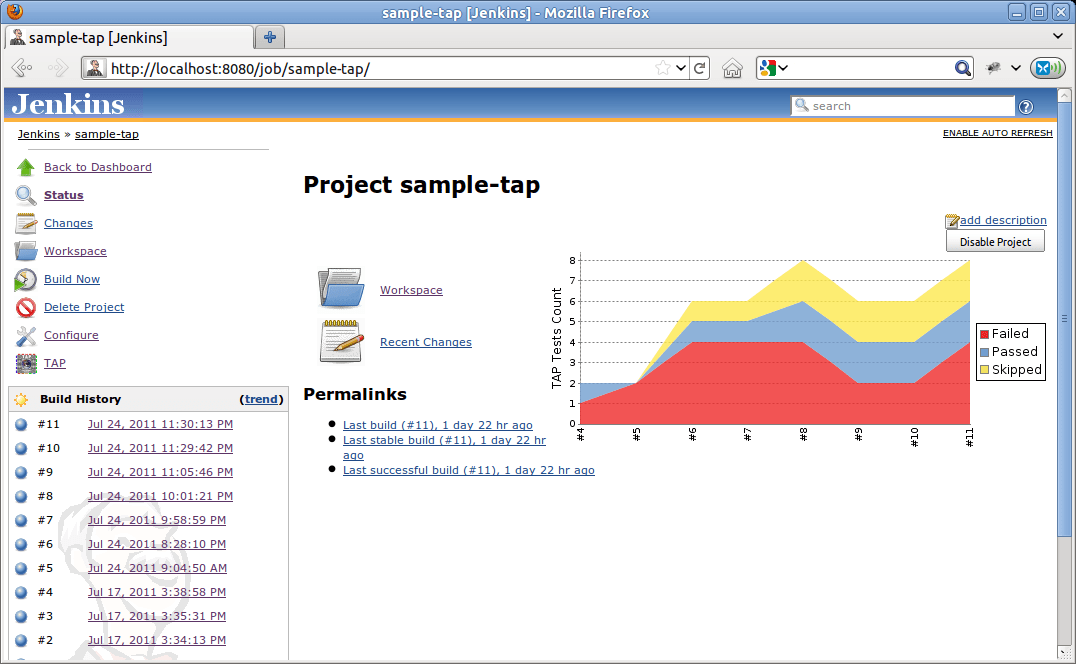Table of Contents
Test automation reporting tools: Introduction
What is test reporting?
A test report is a document that contains an organized summary of testing goals, activities, and results. It is used for presenting testing results in an organized way. Test report describes the way the testing was held and comparing the objectives with test results. The report helps the stakeholders to define the product quality and to decide if it is ready for release. If it shows a big number of defects, the stakeholders may decide to delay the release.
For the QA team, the test report provides information regarding the quality of their test automation. Have they achieved the testing goals? Were they able to find the issues at the early stage? How many unnecessary operations were there? Did the testing scripts perform well?
Choosing the right test automation reporting tools plays a critical role in generating accurate and insightful test reports. These tools enable QA teams to automate the generation of reports, ensuring consistency and reliability in reporting practices. By integrating with test management systems and CI/CD pipelines, these tools streamline the process of collecting and analyzing test data.
Moreover, test automation reporting tools empower QA teams to conduct in-depth analysis of test results. They provide metrics and visualizations that highlight trends, identify bottlenecks, and prioritize areas for improvement. This analytical capability is essential for continuously enhancing test automation frameworks and optimizing testing efforts.
In addition to generating reports for internal stakeholders, these tools facilitate collaboration by offering customizable dashboards and real-time notifications. This ensures that all team members are aligned on testing progress and any issues that require immediate attention.
As we explore the landscape of test automation reporting tools, we will delve into their features, benefits, and best practices for implementation. Stay tuned for insights into how these tools can elevate your testing strategy and contribute to the overall success of your software development lifecycle.
Test report structure
Now we will tell you about the main points of the test report structure.

Project information
Project information is essential for contextualizing test automation efforts and ensuring alignment with product goals and specifications. This section typically includes fundamental details about the product under test, such as its name, description, and version.
The product name identifies the software or application being developed or maintained. It provides a clear reference point for all stakeholders involved in the testing process, ensuring everyone understands which product is being tested.
A brief description outlines the core functionalities and purpose of the product. This helps testers and stakeholders grasp the application’s intended use and expected behavior, guiding testing efforts towards validating these functionalities.
The version number indicates the current iteration or release of the product. It is crucial for tracking changes and updates across different testing cycles, ensuring that testing activities are conducted on the most recent build or version of the software.
Including project information in test reports enhances clarity and ensures that testing efforts are aligned with the specific characteristics and requirements of the product. This foundational information sets the stage for comprehensive test planning, execution, and reporting.
Integrating this project information seamlessly into test automation reporting tools streamlines the reporting process. These tools automate the inclusion of project details in test reports, ensuring consistency and accuracy across testing cycles. They enable stakeholders to access up-to-date project information and make informed decisions based on the latest testing outcomes.
As we explore further insights into project information and the role of test automation reporting tools in enhancing testing practices, stay tuned for practical tips and strategies to optimize software quality assurance processes.
Test Automation Reporting Tools are crucial for streamlining testing processes and ensuring software quality. Choose tools that automate report generation, offer clear visualizations of test results, and integrate seamlessly with your existing setup. They enhance team collaboration and enable data-driven decisions, optimizing overall efficiency and effectiveness in software development.Sergey AlmyashevCOO, ZappleTech Inc.
Test information
Application testing encompasses various stages essential for ensuring software quality and functionality. These stages include unit testing, performance testing, system testing, integration testing, and more, each serving distinct purposes in the testing lifecycle.
- Unit testing focuses on validating individual components or modules of the application to ensure they perform as expected in isolation. This phase aims to detect and fix defects early in the development process, enhancing code quality and reliability.
- Performance testing evaluates the application’s responsiveness, scalability, and stability under different workloads. It helps identify performance bottlenecks, resource limitations, and ensures optimal user experience in production environments.
- System testing verifies the application’s end-to-end functionality, ensuring all integrated components work together seamlessly to meet specified requirements. It validates business workflows, data integrity, and compatibility across various platforms.
- Integration testing tests the interfaces and interactions between integrated components or systems within the application architecture. It validates data exchange, communication protocols, and ensures interoperability across different modules.
Each testing round is meticulously planned with specific goals to uncover different types of issues, from functional defects to performance inefficiencies. The overarching objective is to enhance software quality, mitigate risks, and deliver a reliable product to end-users.
Incorporating effective test automation reporting tools into these testing phases enhances visibility and efficiency in managing test data and outcomes. These tools automate the generation of comprehensive reports, providing real-time insights into test execution metrics, defect trends, and overall test coverage.
By leveraging test automation reporting tools, teams can streamline the reporting process, facilitate data-driven decision-making, and optimize testing efforts across the software development lifecycle. Stay tuned as we delve deeper into the benefits of these tools and strategies for maximizing their impact on software quality assurance.
Test Automation Reporting Tools are crucial for streamlining testing processes and ensuring software quality. Choose tools that automate report generation, offer clear visualizations of test results, and integrate seamlessly with your existing setup. They enhance team collaboration and enable data-driven decisions, optimizing overall efficiency and effectiveness in software development.
Test summary
In this part, you include general information about your testing activity: the number of test cases executed, fail & pass percentage, and comments. This information should be visualized with the help of diagrams, graphs, and tables.
Visual representation plays a crucial role in presenting this data effectively. Diagrams, graphs, and tables are used to visualize key metrics, trends, and comparisons. Graphs can show the distribution of test results over time or across different test categories, providing a clear snapshot of testing progress and outcomes.
Tables complement graphs by presenting detailed data, such as specific test case details, their outcomes, and associated comments or notes. This structured format helps stakeholders easily navigate and interpret the test summary information, facilitating informed decision-making.
Effective use of test automation reporting tools enhances the presentation of test summaries by automating the generation of visual reports. These tools streamline the creation of graphs and tables, ensuring consistency and accuracy in reporting across different testing cycles.
Moreover, test automation reporting tools enable real-time monitoring of test execution metrics, allowing teams to track progress, identify trends, and promptly address any issues that arise during testing. This proactive approach enhances transparency and facilitates timely adjustments to testing strategies as needed.
As we explore further insights into optimizing test summaries and leveraging test automation reporting tools, stay tuned for practical tips and strategies to enhance software quality assurance practices and improve overall project outcomes.
Defects found
This is the most important information in the test report — here you describe the bugs that were found:
- Total number of bugs
- Status of bugs (open, closed, responding)
- Number of bugs open, resolved, closed
- Breakdown by severity and priority
- Logs, screenshots and screencasts, and other relevant data.

A good report is written according to a standard template accepted in the company — it is easier for the stakeholder to study the reports from many projects. It also shouldn’t remind an essay, but briefly describe the test specification.
Challenges in test automation reporting
Most of the challenges that are likely to evolve during the testing and reporting process are non-technical. Despite the importance of testing, it is often underestimated by the stakeholders and developers. Since the goal of quality assurance is finding bugs, this means additional work for the development team and possible delay of product release.
Tight deadlines
Generally, test reporting is one of the final stages in the software development process. Since the release is near at hand, testing and reporting need to happen quickly. The team has to decide on product quality and fix possible issues within weeks or even days. Otherwise, the release will either be delayed or the product of questionable quality will be delivered.
Noisy testing data
Testing generates a massive amount of data: automation scripts, test results in different devices, browsers, and versions. Sometimes the obtained data is useful, sometimes it is noise. It can be difficult to make sense of it and to define the data which is worth attention.
Junk data originates from vague test cases, environmental issues and other factors that cause false-negative or false-positive results. It takes additional time to validate the test result and to understand the root cause of the issue
Numerous data flows
This challenge is closely connected with the previous one and is particularly relatable for larger organizations. With testing, the team receives the data from numerous sources: several teams, testing types tools, and testing frameworks.
Here, the organization needs a general way to sort and use this data in the right way. Otherwise, the risk of missing an important issue grows.
5 test automation reporting tools
We have already studied the need of test reporting, the information the test report should contain, and the challenges the QA team comes across. Now let’s come to the overview of reporting tools.
Here are some features you can find in test reporting tools:
- Managing the data in different programming languages
- Integration with different automation frameworks
- Export of a report in different formats (HTML, PDF, XML)
- Graphic visualization of a report (graphs, tables, diagrams_
- Integration with CI\CD (continuous integration \ continuous delivery) process
Allure Framework
Allure is a popular open-source framework for creating testing reports. It is flexible, lightweight, and is compatible with numerous programming languages and test automation tools.
Using Allure for test reporting allows the developers and QA engineers to shorten the defect lifecycle. Test failures are divided into product defects and test defects that saves time for defect analysis. The reports also contain logs, testing steps and information about timing. Allure also supports CI\CD and bug tracking systems that allows to quickly find the necessary information about the particular test or defect.
The tool also provides clear visualization of the report.

ExtentReports / Klov
ExtentReports is an open-source library allowing you to create custom reports for your tests. You can add to your report any information you consider important: screenshots, tags, devices, authors, etc. The framework is compatible with Java and C#. It also integrates with Cucumber, SpecFlow, JUnit and TestNG testing tools.
ExtentReports is also associated with Klov, which allows you to track all your launches in all your projects. It is also possible to analyze test performance over time, compare each category in detail, set exceptions, create topics for discussion and reminders. The framework is open-source but also has a commercial version.

ReportPortal
ReportPortal is an open-source test reporting service that is integrated with CI\CD, project management tools, and testing frameworks like Cucumber, JBehave, SpecFlow or Jasmine.
It provides improved capabilities for speeding up the reporting with the help of integrated analytic features. Test execution results are stored together with your reporting suites and test plans. The test cases are displayed together with relevant data: logs, screenshots, you also can access the previous results in one click.
The tool also gives an opportunity to automatically analyze the root cause of the problem, whether it is a product bug, automation or a system issue. This can be submitted as an issue ticket, the tool also automatically marks test results. The engineers are notified about the issue for further analysis.

JUnit + Jenkins
Jenkins stands out as a powerful CI/CD tool renowned for its ability to streamline continuous integration and delivery processes. Within its ecosystem, JUnit serves as a crucial plugin designed specifically for generating XML-based test reports. These reports not only capture essential metrics such as test case results and execution status but also facilitate graphical visualization through Jenkins’ user-friendly web interface.
The integration of JUnit with Jenkins empowers development teams with comprehensive insights into their testing efforts. Jenkins parses the XML test reports generated by JUnit, providing detailed visibility into test outcomes, including pass rates, fail rates, and any encountered issues. This capability is pivotal for tracking test results over time, identifying trends in testing performance, and pinpointing areas that require attention or improvement.
Moreover, Jenkins enhances the utility of JUnit by enabling seamless integration with other CI/CD pipelines and development workflows. It automates the execution of test suites, triggers builds based on code changes, and automatically generates and archives test reports for reference and analysis.
By leveraging JUnit and Jenkins in tandem, teams can establish robust testing practices supported by efficient automation and insightful reporting. This integration not only accelerates the feedback loop on software quality but also promotes transparency and collaboration across development and QA teams.
As organizations strive to optimize their CI/CD pipelines and enhance software delivery efficiency, the combination of JUnit and Jenkins remains a cornerstone, empowering teams to achieve higher levels of automation, reliability, and agility in software development. Stay tuned as we delve deeper into practical applications and best practices for maximizing the benefits of these essential tools.

TestNG + Report NG
TestNG stands out as a versatile and widely adopted unit testing framework known for its robust reporting capabilities. By default, TestNG provides comprehensive reporting features that offer both basic summary reports and detailed insights into test execution outcomes. These reports are instrumental in providing stakeholders with clear visibility into errors, test statuses, and the overall health of test scenarios.
In addition to TestNG’s built-in reporting capabilities, teams can opt to enhance their reporting experience with tools like ReportNG. ReportNG, an HTML reporting tool developed for use with TestNG, offers advanced features that go beyond the standard reporting functionalities. It leverages a color-coding mechanism to present test results visually, making the reports more intuitive and easier to interpret for stakeholders.
ReportNG’s HTML reports not only enhance readability but also provide additional context and detail, such as stack traces for errors and performance metrics. This enriched reporting format facilitates informed decision-making by highlighting critical issues and trends in test execution.
The integration of TestNG with ReportNG exemplifies how leveraging specialized test automation reporting tools can elevate the effectiveness of testing efforts. These tools automate the generation of detailed reports, streamline the analysis of test results, and promote collaboration among team members by providing a unified view of testing progress and outcomes.
As organizations continue to prioritize efficiency and quality in their software development processes, the combination of TestNG and ReportNG remains a valuable asset. It empowers teams to deliver high-quality software products through rigorous testing practices supported by insightful reporting and actionable data. Stay tuned as we explore further insights into optimizing testing frameworks and maximizing the benefits of test automation reporting tools.







